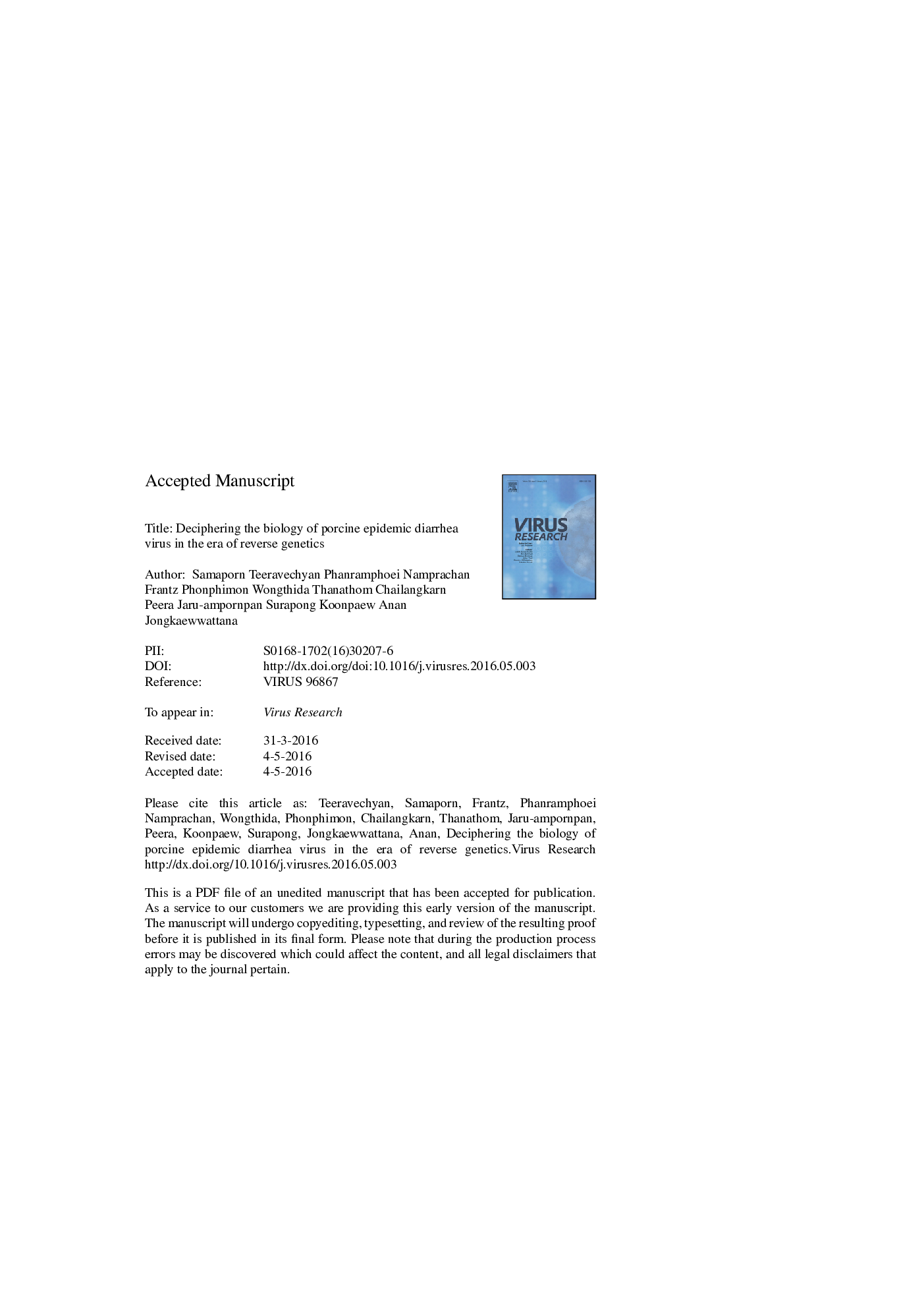| Article ID | Journal | Published Year | Pages | File Type |
|---|---|---|---|---|
| 5675465 | Virus Research | 2016 | 67 Pages |
Abstract
Emergence of the porcine epidemic diarrhea virus (PEDV) as a global threat to the swine industry underlies the urgent need for deeper understanding of this virus. To date, we have yet to identify functions for all the major gene products, much less grasp their implications for the viral life cycle and pathogenic mechanisms. A major reason is the lack of genetic tools for studying PEDV. In this review, we discuss the reverse genetics approaches that have been successfully used to engineer infectious clones of PEDV as well as other potential and complementary methods that have yet to be applied to PEDV. The importance of proper cell culture for successful PEDV propagation and maintenance of disease phenotype are addressed in our survey of permissive cell lines. We also highlight areas of particular relevance to PEDV pathogenesis and disease that have benefited from reverse genetics studies and pressing questions that await resolution by such studies. In particular, we examine the spike protein as a determinant of viral tropism, entry and virulence, ORF3 and its association with cell culture adaptation, and the nucleocapsid protein and its potential role in modulating PEDV pathogenicity. Finally, we conclude with an exploration of how reverse genetics can help mitigate the global impact of PEDV by addressing the challenges of vaccine development.
Related Topics
Life Sciences
Immunology and Microbiology
Virology
Authors
Samaporn Teeravechyan, Phanramphoei Namprachan Frantz, Phonphimon Wongthida, Thanathom Chailangkarn, Peera Jaru-ampornpan, Surapong Koonpaew, Anan Jongkaewwattana,
